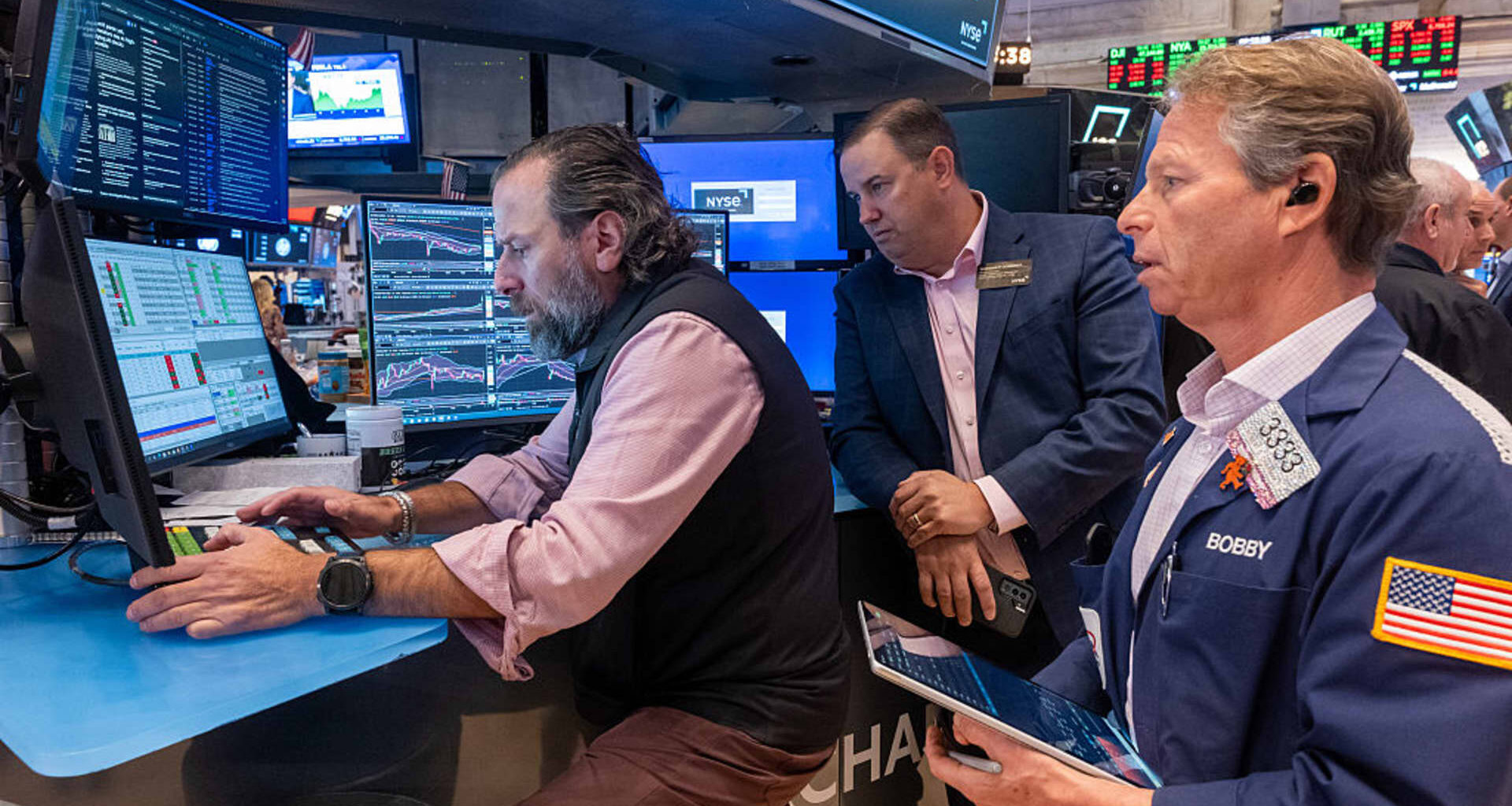Traders work on the floor of the New York Stock Exchange (NYSE) the morning after Democrats achieved wins in New York City, New Jersey, and other states on November 5, 2025, in New York City.
Spencer Platt | Getty Images
U.S. equities rose on Wednesday as the Supreme Court’s tough questions about President Donald Trump’s tariffs raised hopes that some of the duties may be rolled back. Chipmaker Advanced Micro Devices and other names in the artificial intelligence trade also rebounded from valuation concerns that plagued the market in the prior day.
The Dow Jones Industrial Average traded up 340 points, or 0.7%. The S&P 500 gained 0.6%, while the Nasdaq Composite advanced 0.9%.
Investors were paying attention to the Supreme Court hearing arguments Wednesday regarding President Donald Trump’s tariffs. At issue is whether the president had the authority to impose such duties under the International Emergency Economic Powers Act, or IEEPA. The high court’s justices focused their questions on the legality of the sweeping tariffs, with both conservative and liberal members asking Solicitor General D. John Sauer about the Trump administration’s justification for implementing the levies.
Traders on prediction markets reduced their bets that the Supreme Court would uphold Trump’s tariffs in light of the court’s apparent skepticism. Meanwhile, shares of Detroit automakers Ford and General Motors, two tariff-risk bellwethers, popped 3% each, and construction and mining equipment manufacturer Caterpillar grew 4%.
“We continue to see this sort of debate on … how effective they are,” said Phil Blancato, chief market strategist at Osaic. “I don’t know we’re going to know the tariff effect, the resolution of it and the price effect of it until the first quarter of next year, so that adds to this kind of disillusionment.”
Among the other winners of the day, AMD had opened lower before ultimately turning positive, lifting other AI stocks with it. The company posted third-quarter earnings and revenue that beat analyst expectations, though traders initially were worried about its margin outlook. Shares were last higher by 3%.
Alongside AMD, others such as Broadcom and Micron Technology saw gains, reversing course from their losses in the previous session to jump almost 2% and 9%, respectively. Leading AI player Oracle recovered from Tuesday’s losses to rise Wednesday as well.
Grappling with concerns
Wednesday’s moves in AI stocks comes after Palantir dropped about 8% Tuesday, as investors worried that valuations for the software company — and the broader AI theme — have gotten untenable. After all, Palantir is trading at more than 200 times forward earnings. The name extended its losses Wednesday, dropping more than 1%. Super Micro Devices, another AI-related stock, pulled back 11% on disappointing fiscal first-quarter results, and fellow AI play Arista Networks was down 8% following its latest quarterly results.
“The breadth of the market is just not there,” Blancato said. “You have these winners and losers in the AI space, and certainly with stretched valuations, I think we have to be very selective on where you’re making your AI bets going forward.”
“That AI trade is simply running out of steam,” he added. “That’s the problem we’re in, and that’s why we’re in this sideways market.”
Equity investors received some encouraging data on the economy Wednesday with better-than-expected ADP payrolls data and a stronger-than-expected ISM services economy reading. However, the strong data did give a boost to yields, something that some investors may not like to see with expectations growing for a third Federal Reserve rate cut in December.
“This morning’s ADP data suggests that, we are still very much in a strong labor market, and I think sometimes we forget that a strong labor market suggests that you’re not in recessionary environment, and you’re certainly not headed towards one,” Blancato also said. “This is a very bullish signal for the current state of the U.S. economy, except that valuations are stretched, so we’re in this really odd period of time where without a significant catalyst, I don’t see the market pushing much higher, but I also don’t see a significant correction coming either.”
